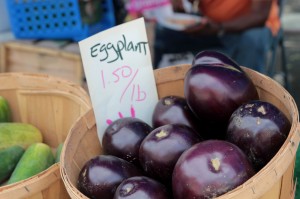Map compares arrests for criminal weapons possession, in red, to drug possession arrests, in green, that resulted from stop-and-frisk in the Bronx in 2011. Created from 2011 New York City Police Department stop-and-frisk data by Selase Kove-Seyram, Juanita Ceballos, and Annaliese Wiederspahn.
For 38-year-old Obediah Poteat, being stopped and frisked by the police is just a part of life in the East Tremont section of the Bronx where he lives with his wife and five children.
What’s worse, he said, is that officers end up arresting people for minor crimes, like disorderly conduct or having small amounts of marijuana in their pockets. “They are always trying to find a reason to put their hands on you,” said Poteat, who has been stopped multiple times, but never arrested. “To search you, to arrest you for whatever.”
Even though the New York City Police Department’s stop-and-frisk policy is meant to only uncover guns, it has resulted in more and more arrests when officers inadvertently find marijuana in people’s pockets instead.
According to a July New York Times editorial, the number of arrests citywide for possession of small amounts of marijuana increased from less than 1,000 in 1990 to 50,000 in 2011. Almost 94 percent of the 16-to-19-year-olds arrested last year had no prior convictions and nearly half had no arrest record.
In September of last year, Police Commissioner Raymond Kelly released a memo instructing officers not to arrest people who have small amounts of marijuana only if the drugs were in public view at the time of the initial stop. The memo cites a 1977 New York State law that changed the treatment of offenders caught with a small amount of marijuana from being grounds for arrest. Instead officers are to issue a summons ticket, similar to a speeding ticket. The maximum penalty under New York State law for possession of 25 grams or less of marijuana that is not burning or in public view is a $100 fine.
Nine months later the Legal Aid Society filed suit against the police department in New York State Supreme Court charging officers with ignoring the commissioner’s directive, continuing their “illegal marijuana arrest practices.”
Plaintiffs in the case included residents of the Bronx, Brooklyn, Queens, and Staten Island.
The Legal Aid Society drew early support for its case from an unlikely source, former New York City Mayor Ed Koch. The former mayor published an op-ed in the Huffington Post in June supporting Legal Aid’s efforts to stop misdemeanor possession arrests. Koch qualified his support for stop-and-frisk saying he would only continue his support for the policy so long as it is not used to falsely make criminals out of citizens.
According to analysis by the New York World, in August of last year, the New York City Police Department made 2,486 arrests after police stops. In the month following Commissioner Kelly’s order, the New York City Police Department arrested 2,661 people on misdemeanor marijuana charges. Unlike other boroughs that saw slight drops in misdemeanor marijuana arrests in November and December, arrests in the Bronx continued to rise through the end of 2011.
The first half of 2012 yielded encouraging news. The Wall Street Journal reported in June that police made 27,492 arrests for small possession of marijuana between October and May. That represented a 24.4 percent drop from the previous eight months.
The lead Legal Aid Society attorney on the marijuana arrest practices case said police need to be bound by court orders, “Our objective is to stop this business of improperly arresting people and taking them down to central booking,” said Thomas O’Brien. “It leaves a troubling stain on their record.” The case is still pending, awaiting a judge to be assigned.






